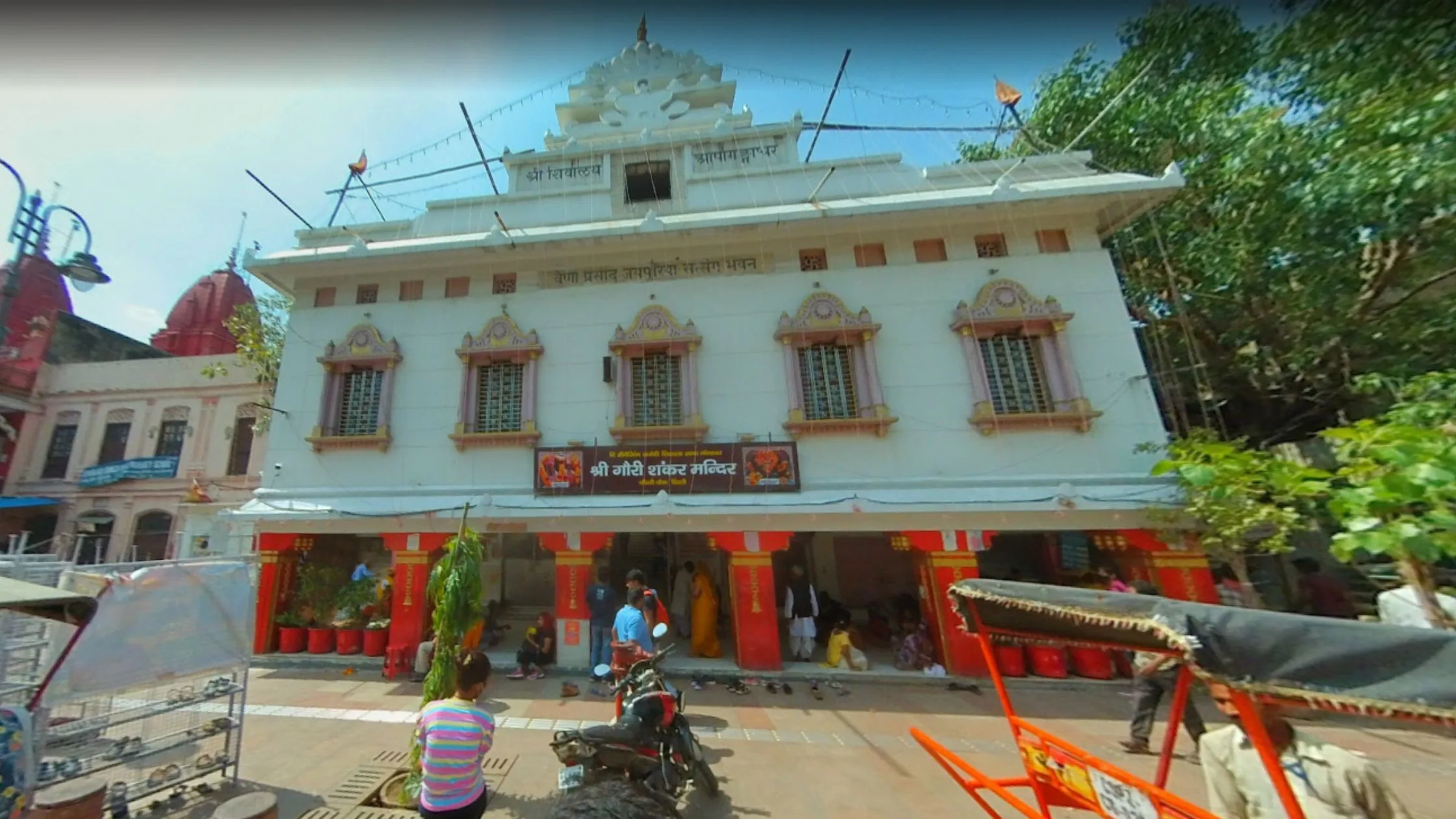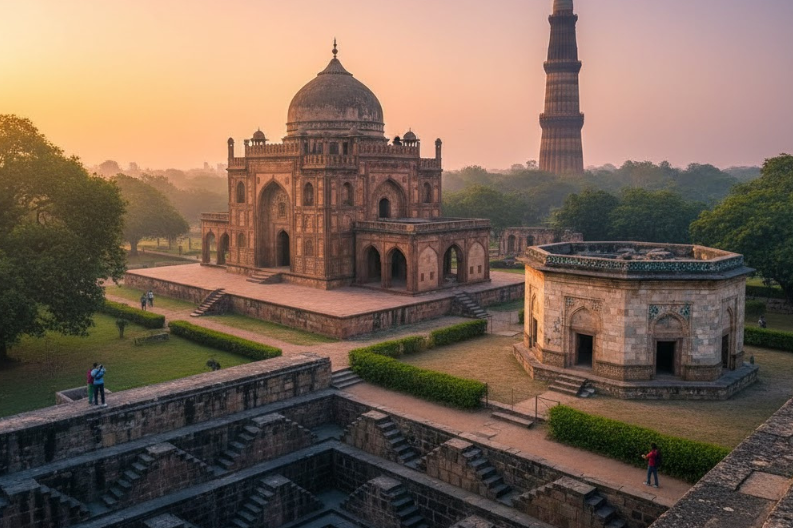The 800-year-old Gauri Shankar Temple, located in Delhi, India, is an ancient temple dedicated to the Hindu God Shiva and Goddess Parvati. It is one of the most important temples of Shaivism.
In the temple, an 800-year-old brown lingam (Phallus Stone) is surrounded by marble depicting female organs. The lingam is surrounded by a silver serpent, representing the cosmic pillar, the center of the universe, or life.
Thousands of worshippers from all over India flock to the temple each year to take part in elaborate rituals and ceremonies that pay homage to the two Gods. The temple is also renowned for its peaceful and calm atmosphere, which brings solace to the pilgrims and visitors who come here.
History
According to history, Apa Ganga Dhar, a Maratha warrior and devotee of Lord Shiva, built it. He was badly wounded in the battle and had little hope of surviving. So he prayed to Lord Shiva in order to save his life, and he promised to build a beautiful temple in the event that he survived.
He survived against all odds and built a temple. His name is inscribed in Hindi under the gabled pyramidal roof of the temple’s main entrance. In 1959, Seth of Jaipur renovated the temple, and his name is inscribed on the windows of the temple.
The temples house idols of Lord Shiva, his wife, Goddess Parvati (Gauri-Shankar), and their two sons, Ganesha and Kartik. Idols of Lord Shiva and Goddess Parvati, adorned with genuine gold ornaments, are located behind the lingam under a silver canopy. Above the lingam, there is also a silver reservoir from which water drips constantly.
Temple Architecture
The Gauri Shankar temple has a straightforward but elegant design. The entrance has marble floors and side columns leading out of the courtyard. The first thing you notice in the courtyard is the chair of Bhagat Svarup Brahmachari, who has lived here half his life.
On the temple grounds, there are shops where one can purchase a basket of flowers, garlands, and any other supplies needed for Shiva’s abhishek (honoring), as well as Prashad (food offerings).
Additionally, there are a lot of stalls selling everything you need to worship Lord Shiva, including rice, flowers, leaves, and sandalwood powder. Also inside the temple is an 800-year-old brown Shiv lingam. During Aarti, every morning, the lingam is washed with milk and then showered with beautiful flowers.
Behind the lingam are statues of Lord Shiva and his wife, Goddess Parvati, adorned with real gold ornaments. The temple is most famous for Gauri and Shankar, even though it contains some idols of Hanuman and other Hindu Gods.

Inside the Temple
Inside the temple, there is a serene, quiet atmosphere. Yogis can be seen quietly chanting “Om Namah Shivay,” and others can be seen sitting quietly and practicing meditation. Aarti, which occurs in the mornings and evenings, is marked by blazing diyas, thunderous claps, bells, and mantra chanting.
Best Time to Visit the Temple
The Shivratri festival is usually celebrated in February, or March is considered an auspicious day to visit Delhi’s, Gauri Shankar Temple. The reason is that this time the entire temple is beautifully decorated with exotic flowers and garlands, making the whole structure more beautiful than ever.
At this event, one can see many devotees of different castes and creeds gathered under one roof, bowing their heads in faith and seeking the blessing of Lord Shiva. In the vent, you can’t schedule a visit during Shivratri; go to the temple on Monday, Lord Shiva’s day.
On Mondays, after pooja, devotees perform abhishek, where milk is poured on a shivalinga. Special pooja is conducted at the Gauri Shankar Temple in honor of Lord Shiva. Along with this special pooja, devotees perform abhishek, where milk is poured on a shivlinga.
How to get to Gauri Shankar Temple of Delhi?
Among the many modes of transport available in Delhi, the metro is the best and the most economical way to reach Gauri Shankar temple in Chandani Chownk. The station that is closest to Chandani Chownk’s Gauri Shankar Mandir is Lal Quila.
After arriving at the subway station, it is a short walk to reach your desired destination. Chandani Chownk is approximately 14-15km from Delhi Airport.
Be patient and allow yourself at least 45 to 50 minutes to get to the temple. In addition, you can save money on the cost of the taxi ride and conserve energy by renting an electric rickshaw from a reputable business.

The Temple’s Entrance Fee and Hours
Entrance to the Gauri Shankar Temple is free for all. The temple is open from 6 AM to 8 PM on all days, with an extended time of 10 PM to 11:30 PM for special pooja ceremonies on certain occasions throughout the year.
Temples can only open doors in two slots at once. Visitors who wish to attend the extended pooja ceremonies are asked to arrive at least an hour before the start of the ceremony and wait in line to get inside. Most people visit on Monday, on Shivaratri and in the Hindu month of Sawan.
Despite the limited time frame, Gauri Shankar Temple’s commitment to providing worshippers a chance to pay their respects and express their faith is admirable.
Conclusion
The Gauri Shankar Temple is an exemplary model of devotion and commitment to religious practices. Not only do they adhere to strict rules and regulations, such as limiting the number of visitors that can enter at any one time, but they also provide a unique experience to all their guests by allowing them to take part in the extended pooja ceremonies that can last up to three hours.
In a world where time is a precious commodity, the Gauri Shankar Temple sets itself apart by recognizing that there are certain aspects of faith and religion that are just as important and sacred as time itself.



